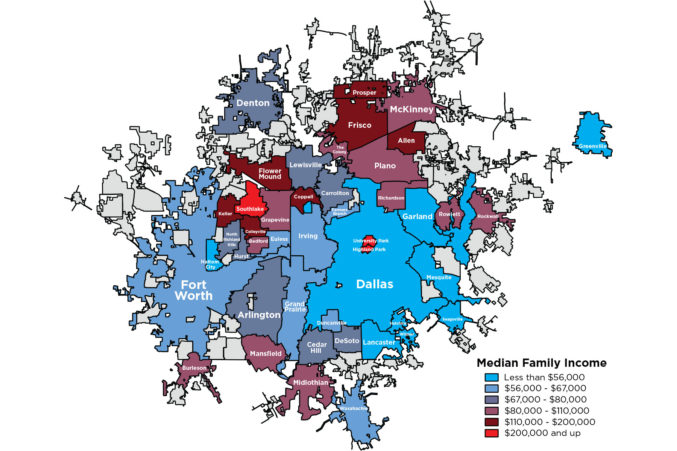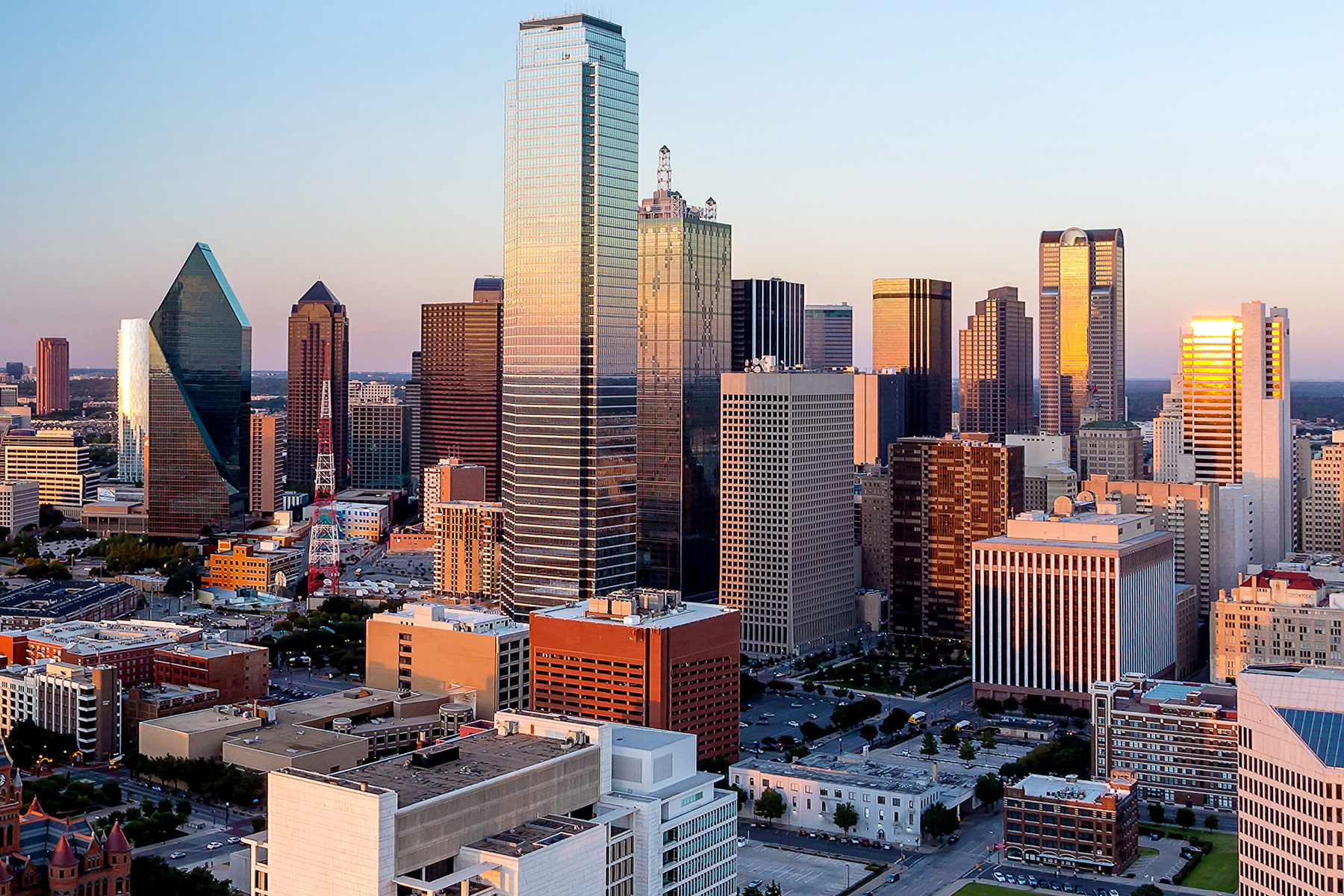Incomes vary for any number of reasons—education, skills and talent, type of job, productivity, work effort, wealth, industries’ ups and downs, bad or good luck. The simple truth about the labor market goes a long way toward explaining the wide and persistent income gaps among Dallas-Fort Worth cities.
In 2015, median family incomes ranged from a high of $211,847 in University Park to a low of $28,427 in Wilmer, a small suburb to Dallas’ southeast. With median family income of $46,902, Dallas ranks fourth from the bottom, behind Wilmer, Hutchins, and Seagoville.
Median Income in Four North Texas Cities

Some other large North Texas cities: $124,794 in Frisco, $101,750 in Plano, $78,682 in Arlington, $62,345 in Fort Worth, $57,926 in Irving, and $55,417 in Garland. Overall, the median for the DFW metropolitan area was $70,673. For the nation, it was $66,011.
Dallas generates a tremendous amount of wealth—the product of all those gleaming downtown skyscrapers, a vibrant financial sector, the booming real-estate sector, and the retail and services industries spread across the city. So why do the city’s incomes trail all but a handful of suburbs and the nation as a whole?
Data on family incomes reflect where people live—not where they’re employed. Once the workday ends, commuting patterns leave Dallas with an income distribution that’s relatively flat, with 37.6 percent of resident families earning less than $35,000 a year and 77.2 percent living on less than $100,000. The rest make over $100,000, with 8.3 percent reporting incomes above $200,000.
Dallas residents’ median income—the value with the same number of families above and below—falls in the $35,000 to $49,999 range, well below the midpoint for most of the rest of the DFW area.
By contrast, the fast-growing northern suburb of Frisco skews toward higher-income families, with 64 percent above $100,000 and less than 4 percent in the low-income groups. Garland clusters around the middle class, with half its families between $35,000 and $99,999. Less than 5 percent of families in Wilmer make more than $75,000 a year.
Family Incomes Across Dallas-Fort Worth

When it comes to income distribution, the Dallas-Fort Worth area probably looks a lot like other metropolitan areas. Post-World War II prosperity—especially the rapid spread of car ownership—led to a mad rush toward suburbanization, with middle-class families moving out of cities in search of more affordable housing, better schools, and lower crime rates. At the same time, gentrification of once-poor neighborhoods pushed low-income families to the fringes, where they took the place of middle-class suburban families that moved farther out.
Highway building hurried the process along, creating a ring of suburban outposts that moved farther and farther from Dallas proper. Workers typically commuted from suburbs to cities, but in recent decades, the jobs have been moving closer to where the workers live and suburban cities have been adding amenities.
It culminates in Frisco. A mere dot on the map in 1990, this city of 125,000 can now boast about its high-income families, the region’s fastest job growth (see “The Geography of Job Growth,” April D CEO), and the Dallas Cowboys’ practice facility.
Decades of population shifts resulted in today’s pattern of median family income. A swath of higher income suburbs stretches across DFW’s northern tier—from Keller and Southlake, through Frisco, Plano, Allen and McKinney, and over to Rockwall. Dallas itself and the first-generation suburbs show relative lower incomes. Income tends to rise again toward the south, but these suburbs aren’t doing as well as the cities to the north.
Dallas can’t be pleased to continue as a DFW also-ran in family income. Raising the city’s medium family income might start with remembering what created the suburbanization boom: families’ preference for quality housing they can afford, good schools for their children, and a safe place to live. Pulling people back from the suburbs will be hard, especially now that amenities and jobs are taking root in one-time bedroom communities.
W. Michael Cox is founding director of the William J. O’Neil Center for Global Markets and Freedom at Southern Methodist University. Richard Alm is writer-in-residence at the center.






